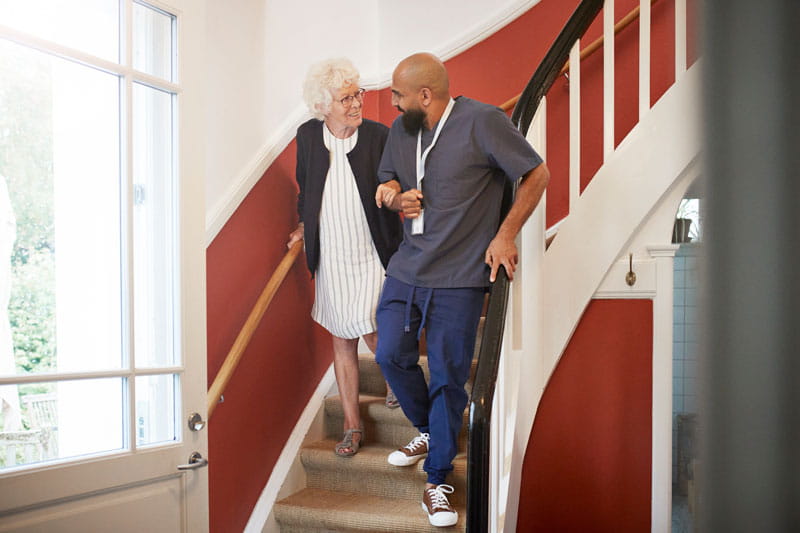Preventing and Managing Falls in Adults with Cardiovascular Disease

Falls are a leading cause of injury in older Americans and carry the risk of permanent disability, high medical costs and even premature death.
But for those with cardiovascular disease, the risk of falls is even higher, with 60% at moderate or high risk for falls. Medications, increased frailty, abnormal heart rhythms, low blood pressure and fainting are just some of the reasons.
Removing the stigma
Even when falls are not associated with significant injury, they can result in increased fear of falling and lead to functional decline in seniors, leading to a diminished quality of life. But despite the frequency of falls among people with cardiovascular disease, the topic is often overshadowed by other medical issues.Many older adults who fall may also be hesitant to mention falls to health care professionals or others in their life, thinking they will lose independence in their day-to-day activities and be treated differently.
Medications increase risk
Certain medications for cardiovascular conditions like high blood pressure can contribute to falls. The same is true for prescription drugs for non-heart related conditions. Medications that have been shown to increase risk of falls include:
- Arrhythmia medications
- Antidepressants
- Antipsychotics
- Anti-anxiety medications (benzodiazepines) such as lorazepam and nonbenzodiazepine, sedative hypnotics such as zolpidem
- Diabetes medications
- Diuretics
- High blood pressure medications including beta-blockers, ACE inhibitors and angiotensin receptor blockers (ARBs)
- Opioids
- Non-steroidal anti-inflammatory drugs (NSAIDs)
- Selective serotonin reuptake inhibitors (SSRIs)
It’s important to discuss the side effects of all medications you are taking with a health care professional and weigh the increased risks of falling with their benefits. It’s often possible to choose medications with fewer side effects or that can be taken in lower doses. In some cases, alternative, non-pharmacological options may be available and should also be discussed with your doctor or pharmacist.
Cardiovascular conditions
Syncope (Fainting): When there is decreased blood flow to the brain, you can lose consciousness and fall. The risk of fainting increases with age and can result in falls.
In addition, people with cardiovascular conditions are more likely to suffer from low blood pressure, medically known as orthostatic hypotension. When blood pressure drops suddenly, a person may experience dizziness and faint. The likelihood of sudden low blood pressure increases with age and for those with hypertension.
Heart failure and arrhythmia: Adults with heart failure and arrhythmia (irregular heartbeat) have an especially high risk of falls because their heart may not pump as efficiently, or may beat in an irregular rhythm, causing a decrease in blood flow to the brain. They are also more likely to take multiple prescriptions, which may increase dizziness and lead to fainting and falls. People with heart failure are 13% more likely to fall than those with other chronic diseases.
Someone with heart failure faces a fourfold risk of sustaining a fracture that requires hospitalization compared with patients with other forms of cardiovascular disease.
Atrial fibrillation: Patients with irregular, rapid heartbeat, clinically known as atrial fibrillation or AFib, also face a higher fall risk. If you have atrial fibrillation and need anticoagulation therapy, a thorough evaluation of stroke risk, bleeding and falls is critical.
Other/Non-cardiovascular issues:
Non-cardiovascular conditions like arthritis, neurological problems, deafness, blindness and cognitive impairment such as dementia can all significantly affect mobility and balance, and in turn increase the likelihood of falling. But you can do many things to reduce the risk of falling, such as:
- Addressing hazards at home such as loose rugs, mats, clutter and stairs.
- Ensure adequate lighting and ambient temperature at home.
- Wear comfortable footwear.
- Incorporate physical and occupational therapy into wellness plans.
- Review medications.
It’s also crucial to stay closely connected to your health care professional and your support network of family and friends to help address and prevent falls.





